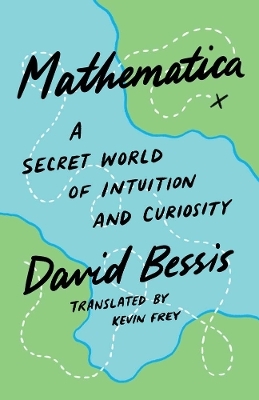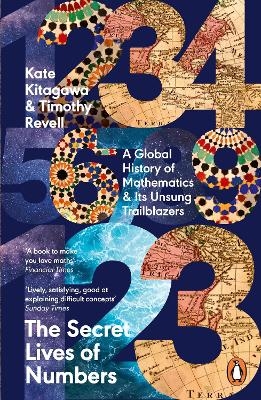
Pascal's Arithmetical Triangle
The Story of a Mathematical Idea
Seiten
2002
Johns Hopkins University Press (Verlag)
978-0-8018-6946-4 (ISBN)
Johns Hopkins University Press (Verlag)
978-0-8018-6946-4 (ISBN)
- Titel ist leider vergriffen;
keine Neuauflage - Artikel merken
Traces the Arithmetical Triangle back to its roots in Pythagorean arithmetic, Hindu combinatorics, and Arabic algebra, and gives an account of the progressive solution of combinatorial problems from the earliest recorded examples to the work of Renaissance and later mathematicians.
Imagine having some marbles, pebbles, or other objects that you want to lay out in a neat triangular pattern. How many do you need to end up with a complete triangle? Three will do; so will 6, 10, 15, and...These numbers are called triangular numbers. Ask the same question for a triangular pyramid. Four will do; so will 10, 20, 35, and ...the so-called pyramidal numbers. This book looks at the discovery of the multiplicity of properties and uses triangular numbers and their many extensions possess. Although often displayed in a triangular array named after the seventeenth-century French philosopher Blaise Pascal, triangular numbers were known many centuries earlier. In this book A.W.F. Edwards traces the Arithmetical Triangle back to its roots in Pythagorean arithmetic, Hindu combinatorics, and Arabic algebra, and gives an account of the progressive solution of combinatorial problems from the earliest recorded examples to the work of Renaissance and later mathematicians.
He shows how Pascal's work-so modern in style-in establishing the properties of the numbers and their application in various fields led to Newton's discovery of the binomial theorem for fractional and negative indices and to Leibniz's discovery of calculus.
Imagine having some marbles, pebbles, or other objects that you want to lay out in a neat triangular pattern. How many do you need to end up with a complete triangle? Three will do; so will 6, 10, 15, and...These numbers are called triangular numbers. Ask the same question for a triangular pyramid. Four will do; so will 10, 20, 35, and ...the so-called pyramidal numbers. This book looks at the discovery of the multiplicity of properties and uses triangular numbers and their many extensions possess. Although often displayed in a triangular array named after the seventeenth-century French philosopher Blaise Pascal, triangular numbers were known many centuries earlier. In this book A.W.F. Edwards traces the Arithmetical Triangle back to its roots in Pythagorean arithmetic, Hindu combinatorics, and Arabic algebra, and gives an account of the progressive solution of combinatorial problems from the earliest recorded examples to the work of Renaissance and later mathematicians.
He shows how Pascal's work-so modern in style-in establishing the properties of the numbers and their application in various fields led to Newton's discovery of the binomial theorem for fractional and negative indices and to Leibniz's discovery of calculus.
A.W.F. Edwards is a professor of biometry at the University of Cambridge and a fellow of Gonville and Caius College, University of Cambridge, England. He is the coauthor of Annotated Readings in the History of Statistics and author of Foundations of Mathematical Genetics and Likelihood, the last is available from Johns Hopkins.
Contents: The Figurate Numbers Three Combinatorial Rules The Combinatorial Numbers in India The Combinatorial Numbers in the West The Binomial Numbers Pascal's Treatise on the Arithmetical Triangle Pascal's Treatise, Part II, and assocaited tracts The Arithmetical Triangle in analysis The binominal and multinomial distributions Bernoulli's Ars conjectandi
| Erscheint lt. Verlag | 23.8.2002 |
|---|---|
| Zusatzinfo | illustrations |
| Verlagsort | Baltimore, MD |
| Sprache | englisch |
| Maße | 152 x 229 mm |
| Gewicht | 317 g |
| Themenwelt | Mathematik / Informatik ► Mathematik ► Geschichte der Mathematik |
| ISBN-10 | 0-8018-6946-3 / 0801869463 |
| ISBN-13 | 978-0-8018-6946-4 / 9780801869464 |
| Zustand | Neuware |
| Haben Sie eine Frage zum Produkt? |
Mehr entdecken
aus dem Bereich
aus dem Bereich
Das Jahrhundert, in dem die Mathematik sich neu erfand. 1870-1970
Buch | Hardcover (2022)
Heyne (Verlag)
CHF 30,80
a secret world of intuition and curiosity
Buch | Hardcover (2024)
Yale University Press (Verlag)
CHF 45,80
a global history of Mathematics & its Unsung Trailblazers
Buch | Softcover (2024)
Penguin Books Ltd (Verlag)
CHF 22,65


